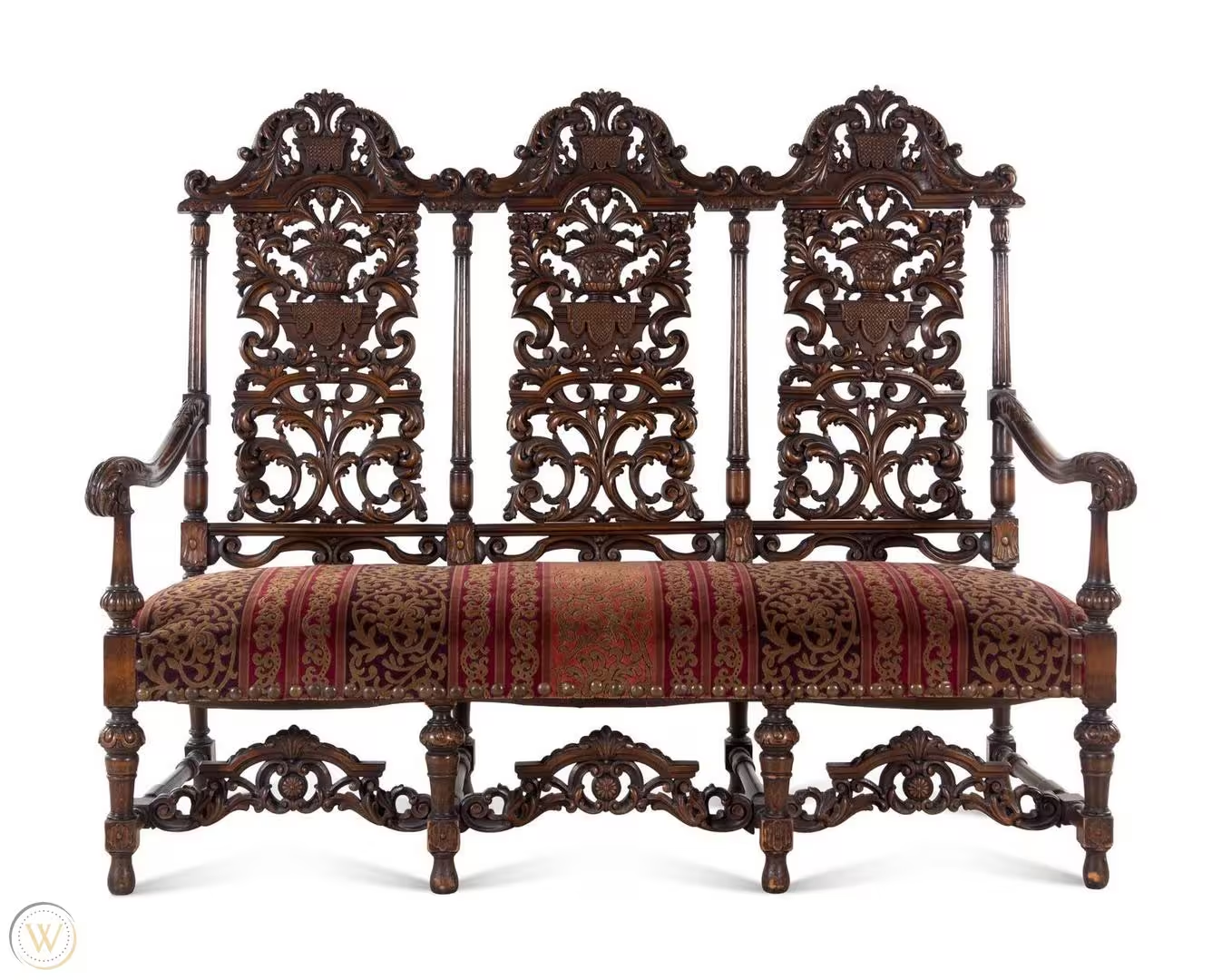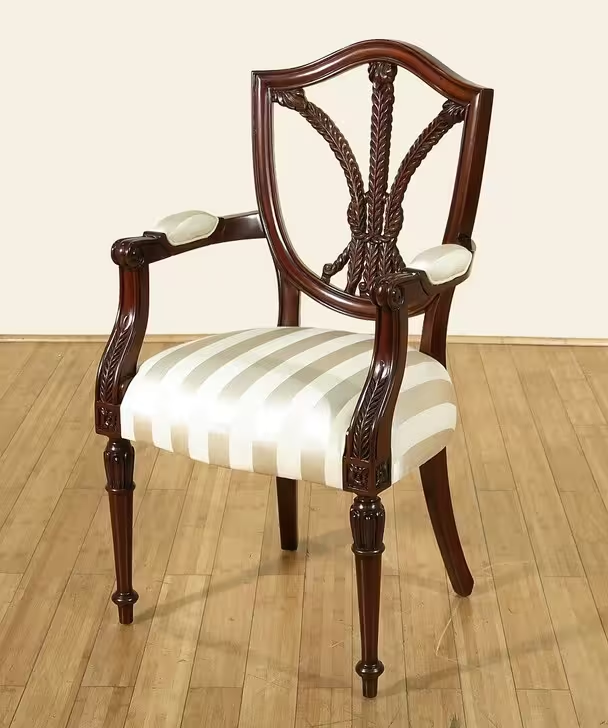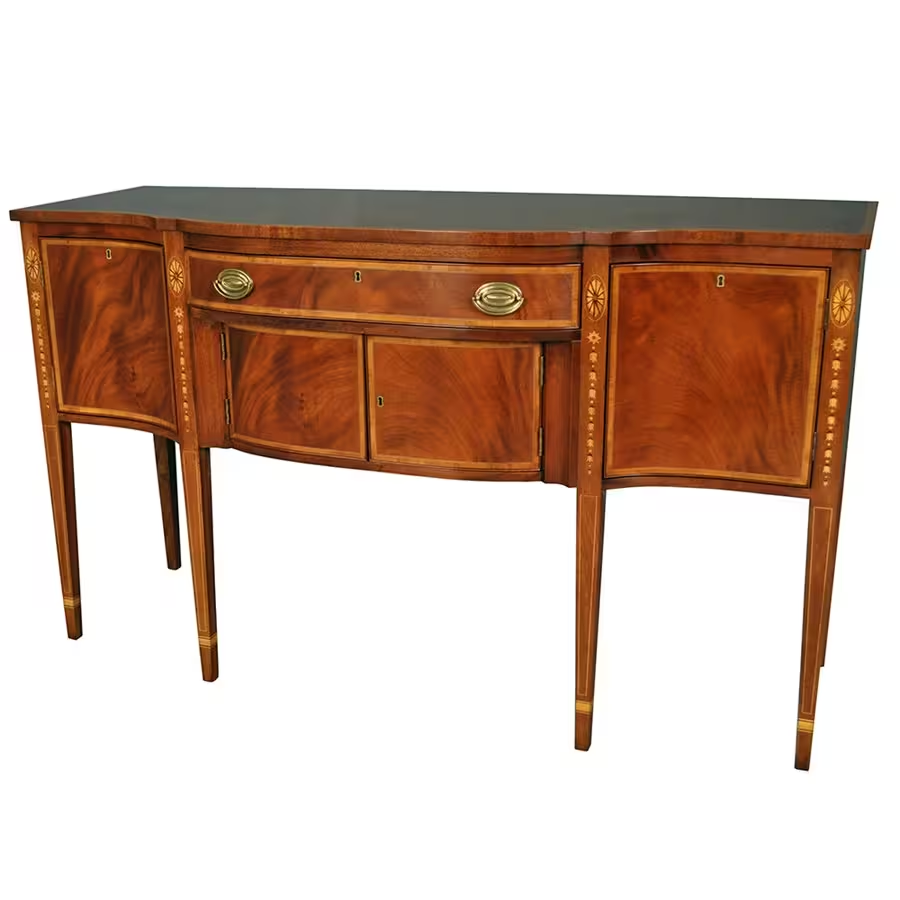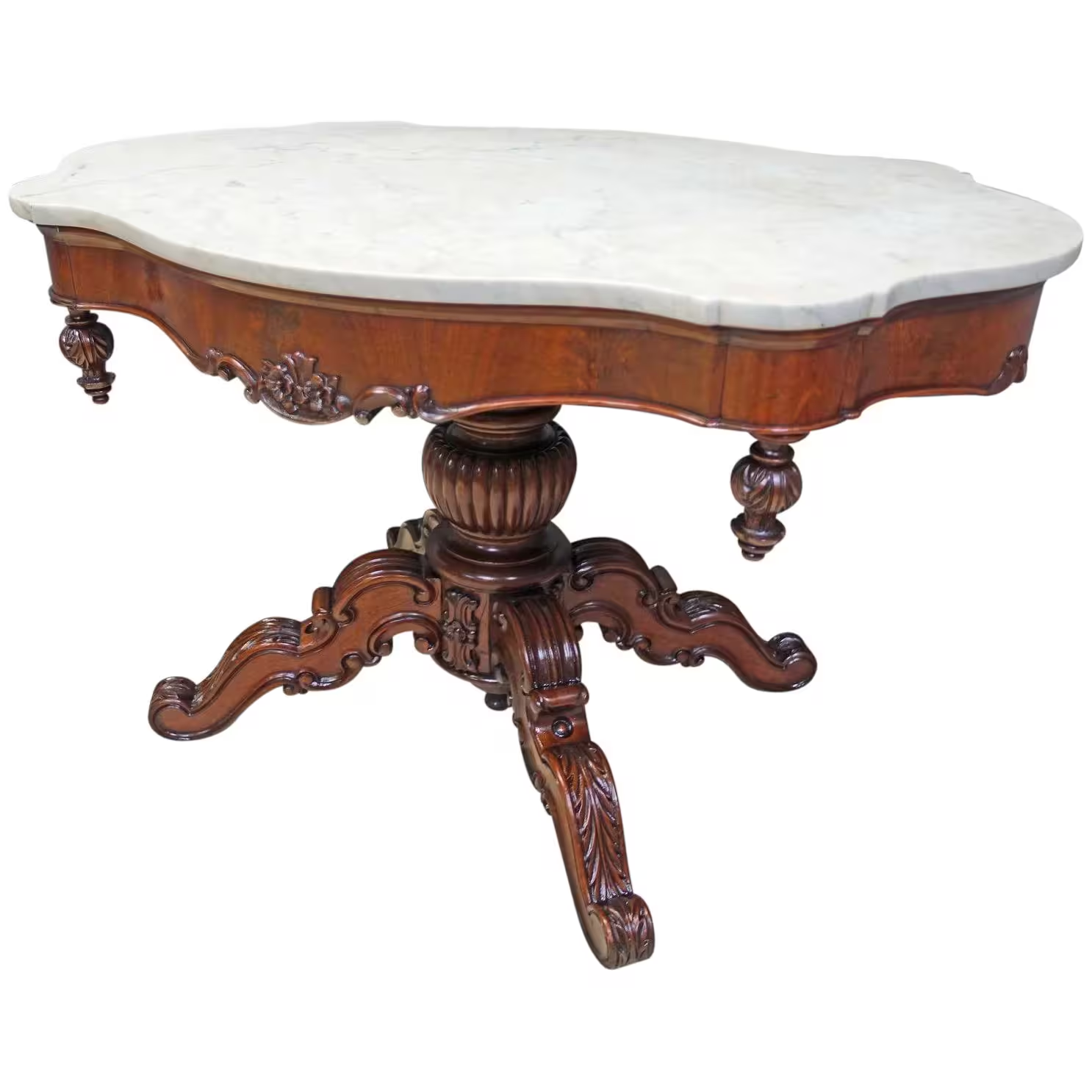James I Jacobean
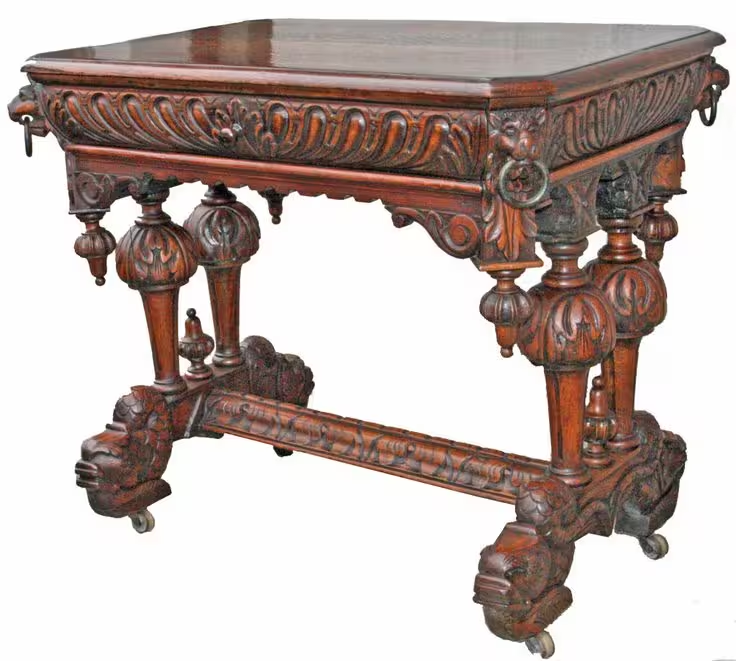
Jacobean’s furniture style was massive but simple. The carving was sometimes gilded and wood was painted black to impersonate Asian enamel. It was mainly made of oak, while lime and cherry were commonly used. Cypress was preferred for making chests.
Some exotic woods were used for cabinet construction, and pear wood stained black and imitating ebony was also used in decorations
Tables were made of oak with black lines of pear tree, the legs were initially bulb-turned, evolving later to simpler baluster forms, with the rails carved in arabesque or lunette patterns.

The main characteristic of the Jacobean style was the severe perpendicularity of the furniture. The chairs had rectangular seats with their backs straight, their legs and those of tables were perpendicular. It was carved in decorations with patterns of eights, contiguous circles, semicircles with petals within, lozenge panelling, double scrolls and the rounded arch. The spiral is used on chair-legs and cupboards.
An interesting, rare type of chair was the X shaped, upholstered chair. The upholstered chairs were brought from Venice during the reign of James I.
Queen Anne
Queen Anne style furniture is characterized by cabriole legs, pad or drake feet, fiddle-backed chairs, and bat-wing-shaped drawer pulls.
Also it was characterized by being comfortable and flexible. It was designed to be light to be easily movable between rooms. With minimal ornamentation and embellishment, Queen Anne furniture was influenced by styles from Asian culture.
The Queen Anne chair was the first seat designed with a cushion for comfort. Winged backs on chairs and lounges made for enjoyable long-term sitting. Queen Anne claimed the first ergonomically built chair to provide support for the spine. In current design, Queen Anne furniture is described as antique furniture. Although poplar, cherry and maple woods were used to construct the furniture, beech, walnut wood was most utilized. Curved lines in the legs, feet, arms and pediments are the only adornments used in the Queen Anne style. These adornments are known as C-scrolls and S-scrolls.
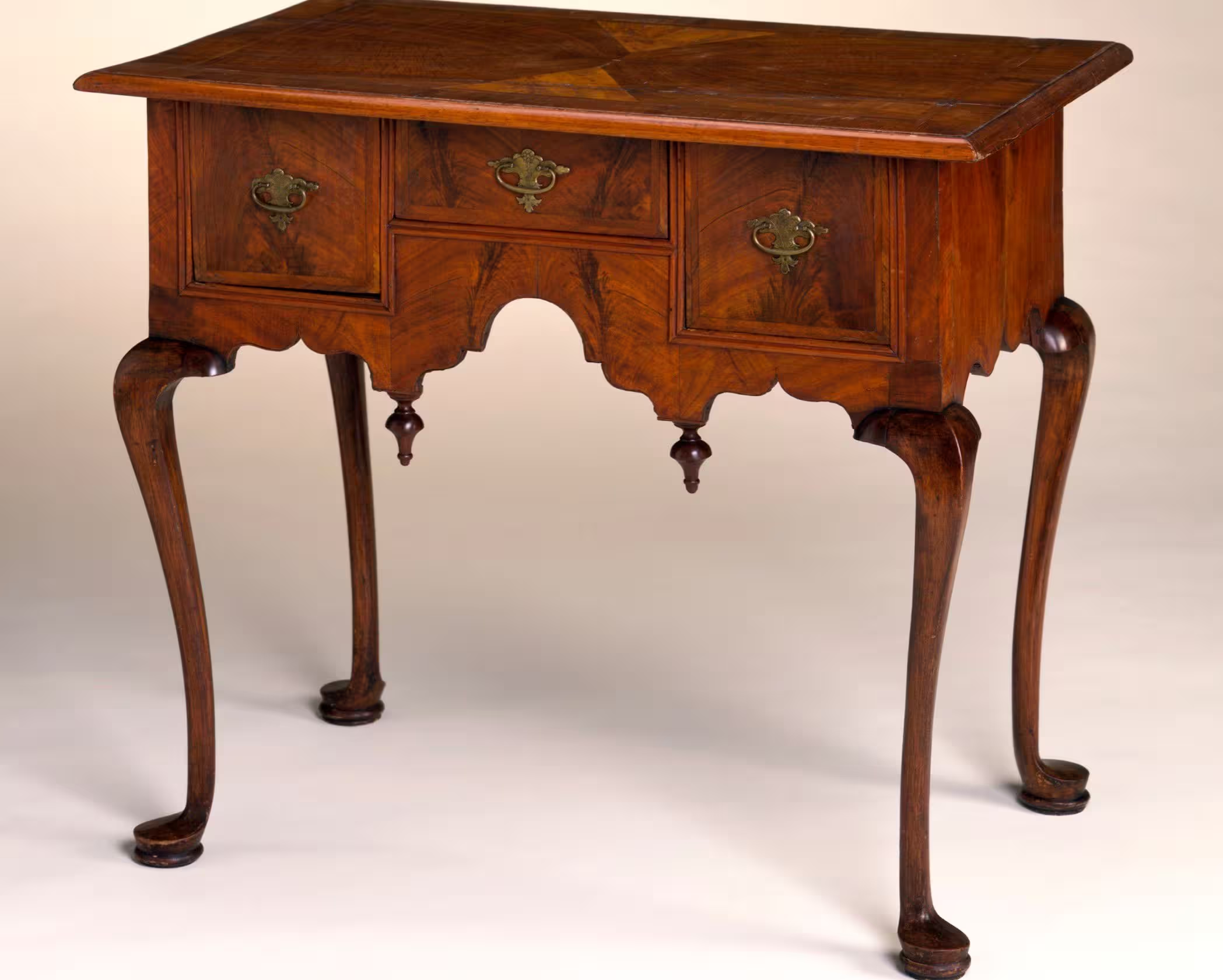
Queen Anne

Queen Anne chifonire

Queen Anne chair

Queen Anne chest
Thomas ChippendaleChippendale
Gothic Chippendale, featured with s-shaped curves and pointed arches in the backs of chairs.
Chinese Chippendale, whose creations often included cabinets and shelves featuring pagoda-style pediments arranged in a fretwork design.
The highest quality Chippendale chairs, tables, cabinets and other pieces, used mahogany which was reddish-brown hardwood. It was more durable and suitable for carving.but there are modern replicas with Chippenale reproductions are often made from other woods, including maple, cherry, beech and walnut.
If you are looking for basic guidelines on how to identify Chippendale furniture, keep an eye for pointed arches, S-shaped curves, and wooden lattices. There are several common elements among pieces, including the following leg styles.
- Ball and Claw Feet
- Cabriole Legs (curved style leg)
- Reeded and Fluted Legs (more classically styled)
- Elaborate Rococo Legs ( elaborate carvings)

Thomas Chippendale
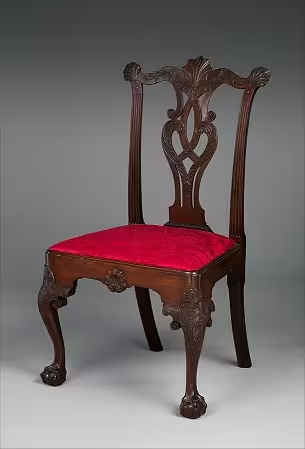
Chippendale chair

Chippendale



